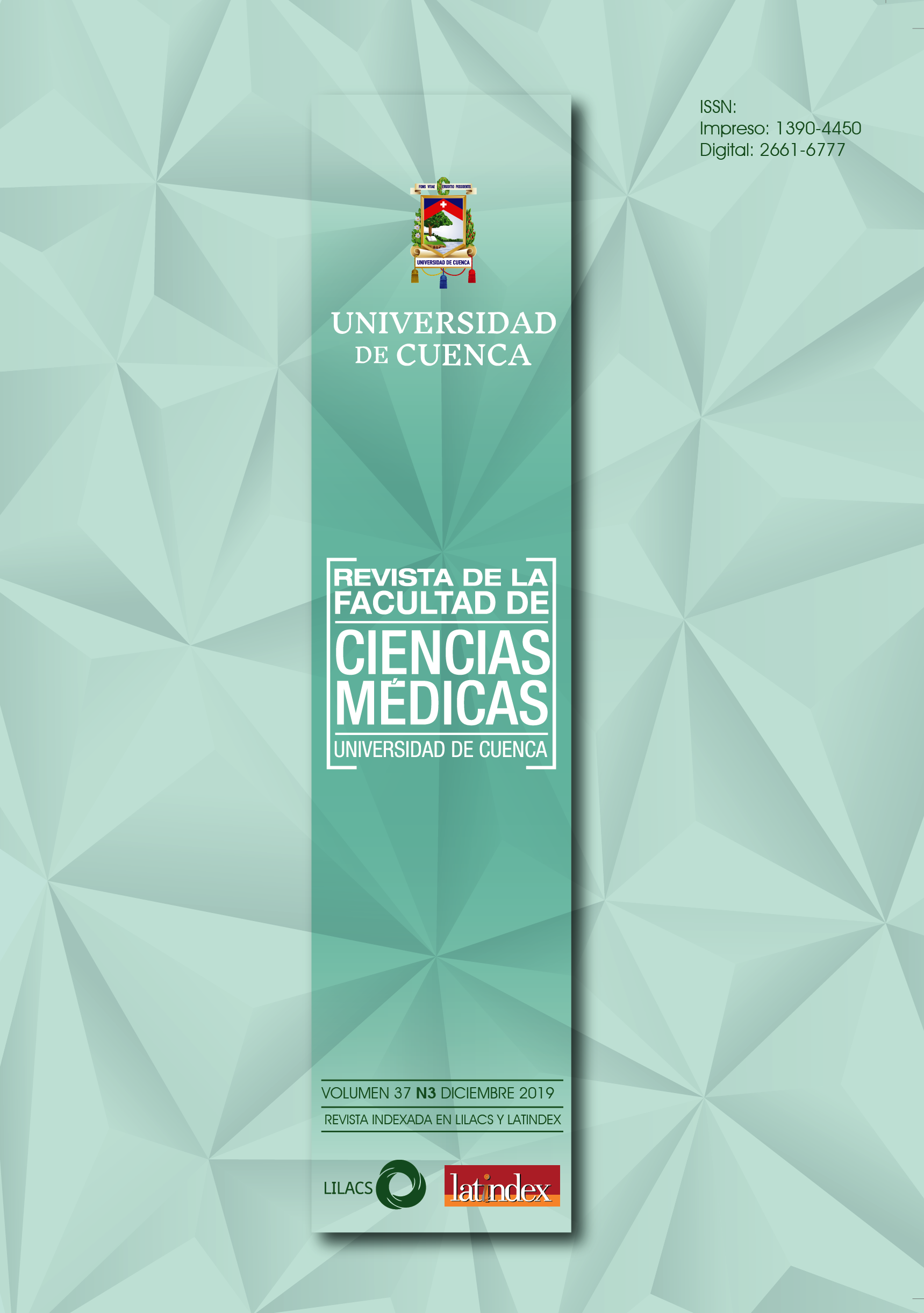Mortality due to infections associated with healthcare. Abel Santa María Cuadrado Hospital, 2015
DOI:
https://doi.org/10.18537/RFCM.37.03.02Keywords:
mortality, death cause, delivery of health care, public hospitals, bacterial infectionsAbstract
ABSTRACT
Objective: To characterize the mortality due to infections associated with health care at the Abel Santamaría Cuadrado Hospital, in Pinar del Río, during 2015.
Methodology: This is a descriptive cross-sectional study. The sample consisted of 278 patients who died from infections associated with health care with necropsy performed and complete data in the medical record.
Results: The 40.6% of patients presented a hospital stay of 22 days and more. The 66.2% presented an infection of respiratory location; the nosocomial pneumonia was the main basic cause of death. About 28.8% of the isolated organisms were Enterobacter ssp. The most common antibiotic applied was Ciprofloxacin, with 54.3% and the most prevalent invasive procedure was bladder catheterization (84.2%).Conclusions: The main variables associated with mortality due to IAAS were hospital overtime and urinary catheter use. Respiratory site infection was the most frequent with gram-negative germ predominance. High use of antibiotics was evident.
Keywords: mortality, death cause, delivery of health care, public hospitals, bacterial infections.
Downloads
Published
Issue
Section
License
Copyright © Autors.

You are free to:
 |
Share — copy and redistribute the material in any medium or format |
 |
Adapt — remix, transform, and build upon the material for any purpose, even commercially. |
Under the following conditions:
 |
Attribution — You must give appropriate credit, provide a link to the licence, and indicate if changes were made. You may do so in any reasonable manner, but not in any way that suggests the licenser endorses you or your use. |
| NonCommercial — You may not use the material for commercial purposes. | |
| ShareAlike — If you remix, transform, or build upon the material, you must distribute your contributions under the same license as the original. |
| No additional restrictions — You may not apply legal terms or technological measures that legally restrict others from doing anything the licence permits. |






